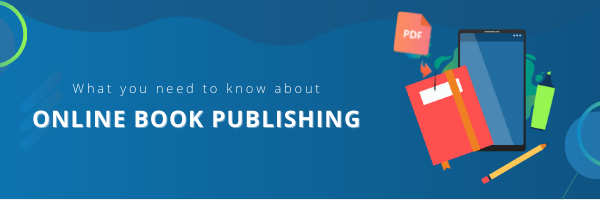
In our digital world, publishing a book online is the way to go for authors. Here’s everything you need to know about digital publishing.
Transitioning from traditional to digital publishing can be scary. The worries of reducing revenues, uncertainty, and change hold back many publishers.
But with increasing digital publishing platforms and free marketing tools, transitioning is easier. More authors are embracing online book publishing.
The big risk is not transitioning, but remaining behind as competitors leap. In our digital world, publishing an online book is the way to go for authors.
Here’s everything you need to know about digital publishing.
How Online Book Publishing Works
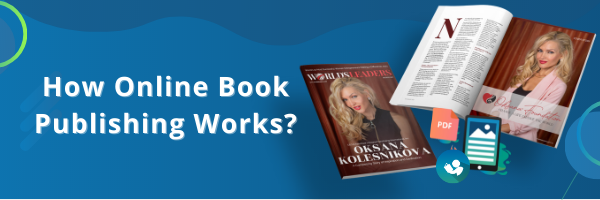
Digital publishing for a book is like self-publishing but done online or with software. You’re responsible for the creation, editing, financing, and distribution. Everything is your responsibility.
With online book publishing, you’re a real entrepreneur. You’re the chief decision-maker, creator, editor, and marketer.
But publishing a book online is a tremendous growth opportunity. You can cut publishing costs, reach a larger audience, own all the rights, and make more money. In the end, the book is all yours, and you have complete control of everything.
Writing a book is the most challenging part. It takes a lot of hard work before you start editing. But once you have taken all the steps, and you have a copy of your finished and published book, you can take control.
Many first-time writers think of traditional publishing as the only way to bring their book to an audience. Online publishing is for businesses or authors who want to own their creativity and play a role in every step of the process.
How to Transition to Online Publishing
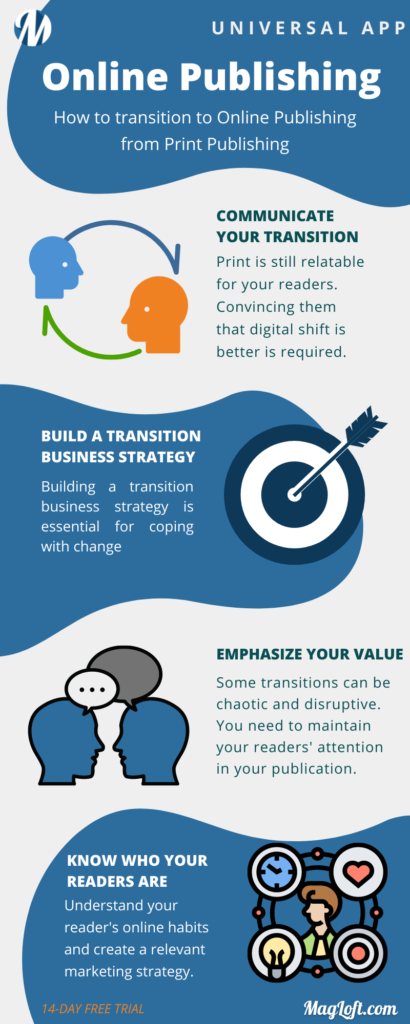
Online publishing is popular. Between 2004 and 2018, over 104 newspapers in the US reduced print publishing from daily to just two or three times a week. The decision to cut down on printing arose due to the need to save costs for survival in the digital age.
Scaling down on print for a planned transition to a digital culture is a better growth approach. But it isn’t necessarily enough in itself. As a publisher, you’ll still need to move readers online and improve the digital experiences.
Here are some tips to help you transition from traditional to online publishing.
Communicate Your Transition
Print is still relatable, and you should take this into consideration for your business. Part of your audience may not feel comfortable when you’re transitioning to digital. You have to be thinking about how you’ll convince them that the digital shift is better.
A strategic change communication plan is handy for an effective transition. As you focus on survival, remember your loyal but-resistant reader still matters.
As a rule, you must gain your readers’ trust for them to accept your message. It’s easier to convey your message when you position yourself as an honest and listening brand. Be frank about your planned transition, and you’ll have more followers than rebels.
Build a Transition Business Strategy
Building a transition business strategy is essential for coping with change. Ken Herts, Chief Operating Officer and Director of Operations at The Lenfest Institute for Journalism, says it’s best to build a digital business before slashing print.
An instant shift is likely to unsettle your business. It’s as good as shifting out of business. Herts says the goal should be to preserve a print business as your shift continues. This would give you better control of change as your reader acclimatizes to digital.
Emphasize Your Value
It’s easy for you and your readers to get distracted from your culture during the transition. Some transitions can be chaotic and disruptive. This is why you need to put more effort into maintaining your audience’s attention in your brand.
Emphasizing your values and mission is essential during your transition. Your audience must understand your content continues to exist. Improve engagement to connect and maintain your readers’ interest in your business.
Know Where Your Readers Are
As you transition into digital publishing, it would help to leverage the audience’s data. Aim to understand their online habits and create a relevant marketing strategy.
Reorganization means you need to understand where your readers meet online. Digital marketing is vasts, so it would be best if you could concentrate your efforts to target where your audience spends most of their time.
Simplify Your Rates
Pricing can be a big challenge when transitioning to digital publishing. Finding a fair balance between delivered editions and your prices can help readers see the value.
Ideally, you’ll want to increase digital options as you cut down on print. You’ll want to test the reaction to your packages before entirely ditching print.
The major problem is maintaining sustainable revenues during your transition. Some readers may resist your new prices because they’re accustomed to print pricing.
Set a clean subscription strategy rather than just lowering prices. Lower prices could even lower subscriptions due to perceptions of decreased value. Have distinct packages or a set monthly fee that gives users unlimited access to your content.
To maintain revenues, offer more value and automate billing options. Make readers think they’re better off on your digital publication platform. Automated billing will help prevent revenue reduction from forgotten renewals.
How to Publish Your Book Online
You may be looking to publish a serial publication with regular content production, or maybe you just want to publish your own book. If it’s the latter, here are some steps for how to publish a book online.
Choose the Right Digital Publishing Platform
Once you’ve figured out how to transition, you’ll need a digital publishing company. In the digital world, there are many digital publishing platforms. Finding a trustworthy and competent one can be a challenge.
Consider your current level as a business or author and your growth expectations. The best digital publishing platform should offer the complete digitization of your business or book. You want to publish content and get it to your audience.
Create a Digital Distribution Strategy
Magloft can save you considerable costs when it comes to distribution. We’re a custom content conversion and creation platform, making your transition seamless.
Upload your content, convert it into HTML format, and you’re ready to get rolling. Plus, you have marketing solutions connecting you with relevant partners in your niche. No need to worry about how you’ll grow your audience when our dedicated team is ready to help.
A digital distribution strategy and platform are crucial for your business growth. Without it, your audience and business suffer. Your message won’t reach them, and it will be challenging to hit your revenue goals.
Design a digital marketing strategy to help spread the word about your new model. You want to speed up awareness and get more people to access your content. Go after all distribution channels that will help you reach your audience.
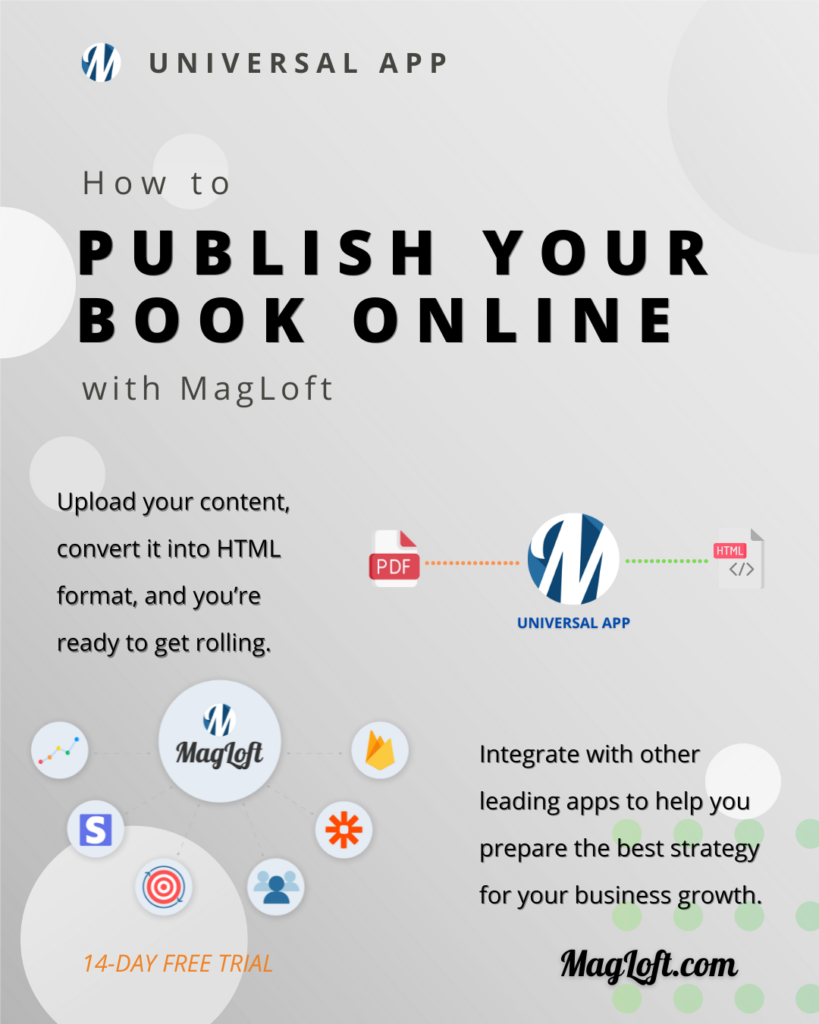
Tips for Promoting Your Book and Growing Your Revenue
Before you create your content distribution strategy, read the below publishing tips. Arm yourself with proven marketing skills to increase your leads and conversions.
Do Your Research and Build an SEO Website
A big part of building a content distribution strategy is building an SEO website. Think about growing your online presence and attracting organic traffic to your business.
Marketing your digital publishing business can be challenging, not to mention expensive. An SEO website is your long-term tool to cut marketing costs and generate free traffic.
The foundation of a successful SEO website is keyword research. Keywords are the most likely words or phrases your audience uses to search for your content. Finding and incorporating relevant keywords is the key to building a successful content marketing strategy.
Use Free Content Promo Websites
As a growing publisher, you need to utilize all online marketing opportunities. Free guest blogging sites and content promo websites are a must-use tool for your growth.
Many free publishing platforms can help you reach your audience. Make sure the ones you choose suit your audience and writing style.
Play With Social Media
Another effective tool for improving engagement for digital publishing business is social media. We can bet your entire audience uses at least one of the many social media platforms.
As earlier advised, know where your audience is when using social media marketing. Choose those platforms, giving you a more significant audience reach. Create engaging and fun content for your audience and stay active to build customer loyalty.
Invest in Paid Advertising
Taking advantage of the web and social media analytics is a great way to learn your audience. With relevant audience insights, you can launch targeted ads to boost conversions.
Leverage Guest Blogging
Guest blogging is an opportunity to showcase your expertise in your niche. It’s also a valuable tool for uplifting your SEO and boosting web traffic.
Guest blogging is usually a free marketing tool. Make sure you guest post on high-quality websites to see value from your efforts. Create quality content to generate brand curiosity and attract readers to your website.
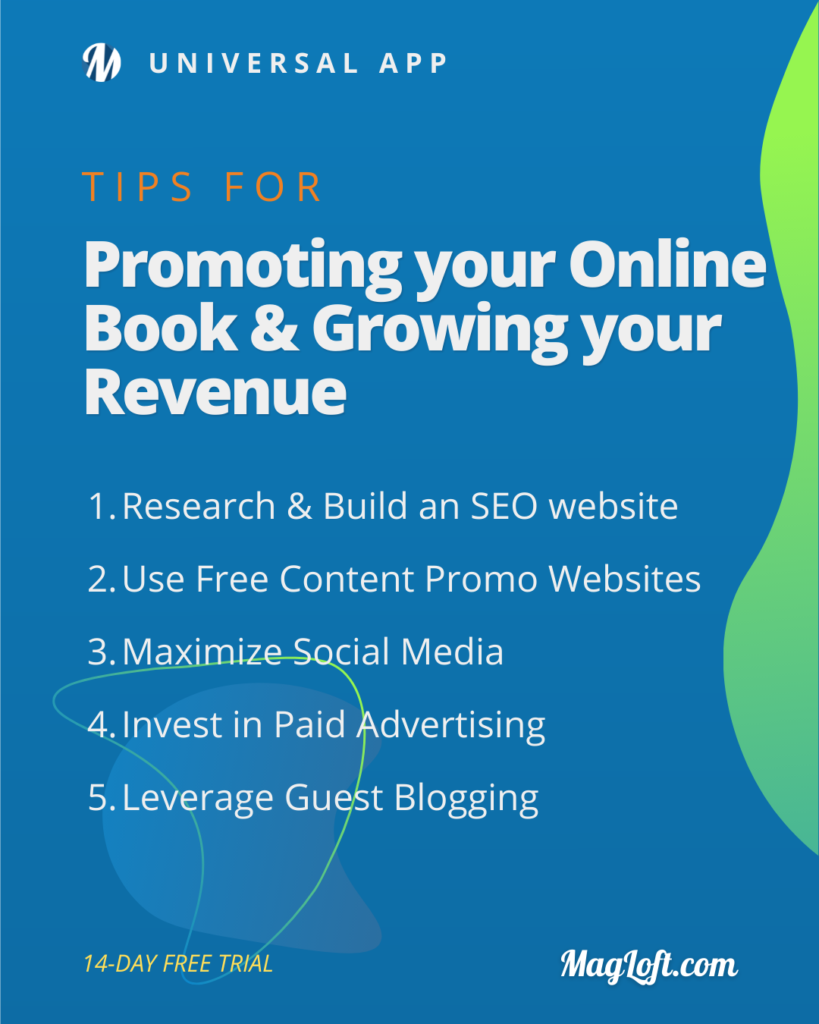
Cut to the Chase With a Digital Publishing and Marketing System
Online book publishing may appear challenging, but it’s within your reach. Once you’ve figured out transitioning and marketing, that’s it. In the long run, what matters most is to stay consistent and continue offering value to your readers.
If you’re still fearful of crossing the bridge, remember you can bank on a digital publishing platform for success. Magloft is the way to forget the worries of online publishing and marketing. Start your 14-day free trial to discover what you’re missing out on.
